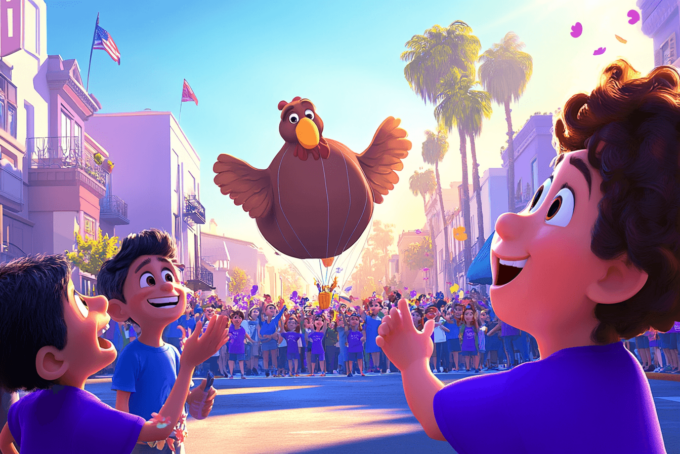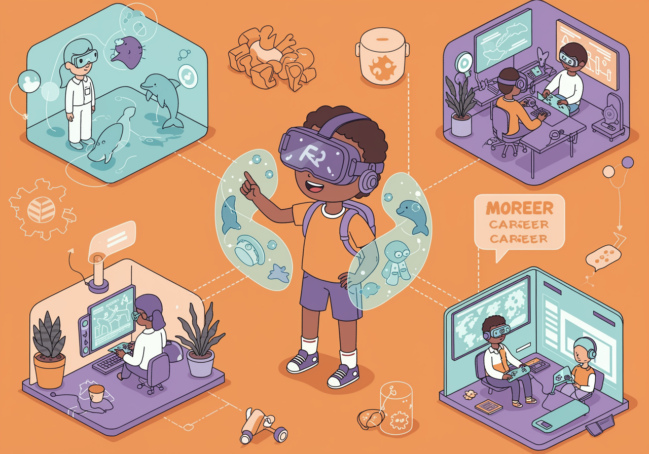Visual learners thrive when they can see and interact with information, making it important to provide them with activities and tools that cater to their unique learning style. Whether you are a parent or a teacher, understanding the characteristics of visual learners is crucial in creating an effective learning environment for them. This article explores the world of visual learning, offering practical tips and engaging home activities for visual learners.
Understanding Visual Learning
Visual learning is a learning style in which individuals process and retain information better when it is presented in a visual format. These learners excel at interpreting visual cues such as diagrams, charts, and images. They often have a strong sense of spatial awareness and enjoy activities that involve observation and observation.
Visual learning is a multifaceted approach that goes beyond just looking at pictures or watching videos. It involves the brain’s ability to process and interpret visual information, making connections between concepts, and creating mental images to aid in learning and understanding. Visual learners often engage in activities such as mind mapping, sketching, and using flashcards to enhance their learning experience.
Characteristics of Visual Learners
Visual learners exhibit certain characteristics that set them apart from other types of learners. They have a keen eye for detail and tend to remember visual information more easily than written or spoken information. They often prefer to see information organized into charts or diagrams and utilize color coding to make connections between concepts. Visual learners also benefit from the use of visual aids during instruction as they can quickly grasp complex ideas when presented visually.
Furthermore, visual learners are often skilled at recognizing patterns and trends, which can be a valuable asset in fields such as design, architecture, and data analysis. Their ability to think in images and visualize solutions to problems can lead to innovative thinking and unique perspectives in various academic and professional settings.
The Importance of Visual Learning
Visual learning is an essential aspect of education that should be recognized and nurtured. By understanding the importance of visual learning, parents and educators can create an environment that supports the specific needs of visual learners. Visual learning aids in improving comprehension, retention, and overall engagement with the material. It fosters creativity and critical thinking skills by encouraging learners to make connections between ideas and visualize concepts.
Moreover, the integration of visual learning techniques in educational settings can cater to a diverse range of learners with varying learning styles. It promotes inclusivity and provides opportunities for students to showcase their strengths and talents. Embracing visual learning not only enhances academic performance but also cultivates a deeper appreciation for the power of visual communication in our daily lives.
Creating a Visual Learning Environment at Home
When it comes to creating a visual learning environment at home, it’s essential to consider both the physical space and the tools available. Here are some tips to get started:
Visual learning is a powerful way for students to absorb information and make connections. By engaging multiple senses, visual aids can help solidify concepts and improve retention. In addition to setting up a dedicated study area, incorporating elements like color-coded notes, mind maps, and flashcards can further enhance the learning experience.
Setting Up Your Space
Create a dedicated study area that is free from distractions. A clean and organized space will help visual learners stay focused and engaged. Decorate the area with visual aids such as posters, charts, and educational artwork that relate to the subjects they are studying.
Consider incorporating natural light into the study area to create a bright and inviting space. Research shows that natural light can positively impact mood and productivity, making it an ideal addition to a visual learning environment. Additionally, adding plants to the space can help improve air quality and create a sense of calm conducive to learning.
Essential Tools for Visual Learning
Invest in tools that enhance visual learning. Consider providing a whiteboard or a chalkboard for visual learners to brainstorm, solve problems, and visually organize their thoughts. Interactive educational apps and software can also be valuable resources for visual learners.
Encourage the use of color in note-taking and highlighting important information. Color can be a powerful tool for memory retention and can help visual learners make connections between different concepts. Experimenting with different color schemes and visual cues can make studying more engaging and effective.
Engaging Home Activities for Visual Learners
Engaging visual learners in activities that stimulate their visual learning abilities can greatly enhance their learning experience. Visual learners are individuals who process information best when they can see it. They often think in pictures and benefit from visual aids to understand complex concepts. Here are some activity ideas to cater to the needs of visual learners:
Visual learners thrive in environments where they can engage their sense of sight and creativity. By incorporating activities that tap into their visual strengths, educators and parents can help these learners reach their full potential.
Art and Craft Projects
Encourage visual learners to express their creativity through art and craft projects. Painting, drawing, and sculpting can help them visualize ideas and concepts while honing their motor skills. Provide a variety of art materials and encourage experimentation and self-expression. Art projects not only foster creativity but also allow visual learners to communicate their thoughts and emotions visually.
Engaging in art and craft projects can also boost visual learners’ confidence and self-esteem. As they see their ideas come to life through their creations, they develop a sense of accomplishment and pride in their work.
Interactive Online Learning Tools
With the advancement of technology, there are numerous online platforms that cater to visual learners. Interactive learning tools, such as educational videos and virtual simulations, provide visual learners with dynamic and engaging learning experiences. These tools offer interactive visuals that can help reinforce concepts and improve retention for visual learners.
Online learning platforms tailored for visual learners often incorporate animations, diagrams, and colorful visuals to enhance the learning experience. These interactive elements not only make learning more enjoyable but also aid in information processing and understanding.
DIY Science Experiments
Visual learners love hands-on experiences. Try conducting simple science experiments at home that rely on visual elements. For example, creating a volcano using baking soda and vinegar or observing the growth of plants can captivate their interest and promote scientific thinking. These hands-on experiments allow visual learners to see scientific principles in action and make connections between theory and real-world applications.
Engaging in DIY science experiments can also instill a sense of curiosity and wonder in visual learners. By witnessing scientific phenomena firsthand, they develop a deeper appreciation for the natural world and cultivate a lifelong love for learning and exploration.
Incorporating Visual Learning into Everyday Tasks
Visual learning doesn’t have to be limited to structured activities. It can be integrated into everyday tasks and routines, making learning a continuous process. Here are some ideas:
Visual Chore Charts
Create visual chore charts that outline the tasks and responsibilities for each family member. Include pictures or symbols to represent each chore, making it easier for visual learners to understand and follow. This visual aid will not only help with task completion but also promote independence and responsibility.
Additionally, you can take the visual chore chart a step further by incorporating a reward system. For every completed task, visual learners can earn a sticker or a checkmark next to the chore. This not only reinforces the completion of tasks but also provides a sense of accomplishment and motivation to continue engaging in household responsibilities.
Cooking and Baking as Learning Opportunities
Involve visual learners in cooking and baking activities. Encourage them to read and follow recipes, measure ingredients, and observe the transformation of ingredients during the cooking process. These activities provide sensory stimulation and allow visual learners to visualize cause-and-effect relationships.
To enhance the learning experience, consider creating a visual recipe book with step-by-step instructions accompanied by colorful photographs. This visual aid can help reinforce the cooking process, ingredient recognition, and sequencing skills for visual learners. Additionally, exploring different cuisines and cultural dishes can broaden their visual and culinary experiences, making learning in the kitchen a fun and educational adventure.
Tips for Parents of Visual Learners
Parents of visual learners play a vital role in supporting their child’s learning journey. Here are some useful tips:
Encouraging Creativity and Imagination
Provide opportunities for your visual learner to explore their imagination and creativity. Encourage them to create visual representations of their thoughts and ideas through drawing, storytelling, or building with blocks. These activities not only enhance their visual learning skills but also promote self-expression and confidence.
Balancing Screen Time and Hands-On Activities
While technology can be a valuable tool for visual learners, it’s important to strike a balance between screen time and hands-on activities. Ensure that they have opportunities to engage with physical materials and stimuli to enhance their tactile and spatial awareness. Encourage outdoor activities, exploration, and play, which provide multisensory experiences.
Fostering Independent Learning Skills
Teach your visual learner how to organize their materials, make study schedules, and set goals. Help them develop strategies for effective note-taking, mind mapping, and visual summarization. These skills empower visual learners to take ownership of their learning and thrive independently.
In conclusion, visual learning is a powerful approach that can significantly enhance the educational experience of visual learners. By understanding their unique characteristics and providing them with a visually stimulating environment, parents and educators can empower visual learners to reach their full potential. Through engaging activities, everyday tasks, and effective parent support, visual learners can develop the necessary skills to succeed in a visually-driven world.
You might be interested:



